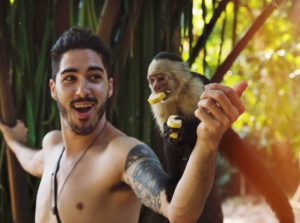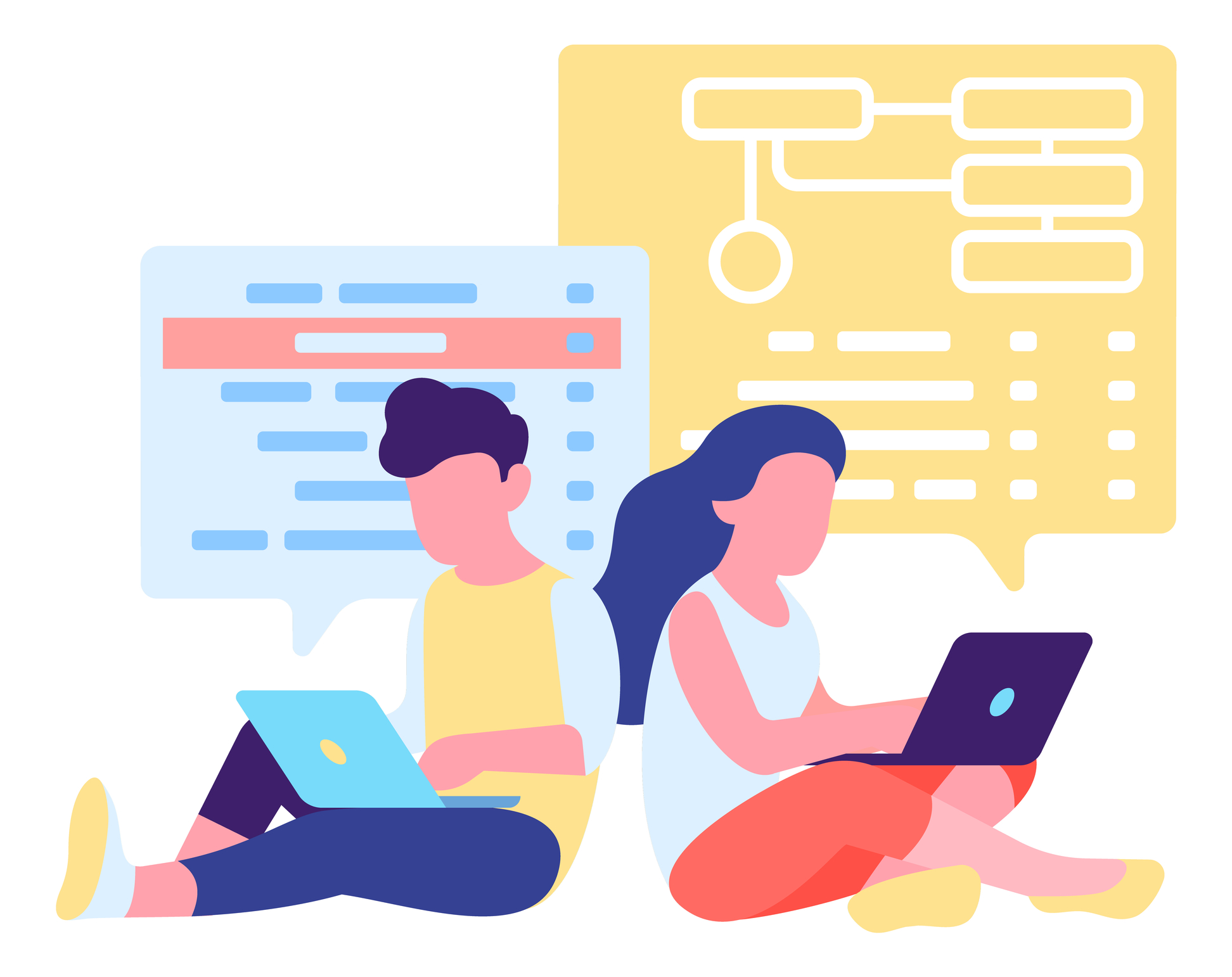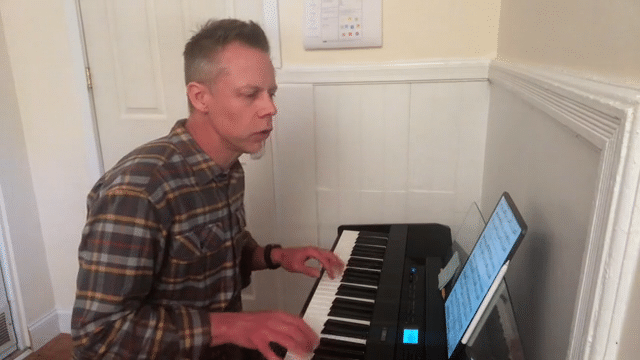Cuando era un bebé, viví con las monas durante tres meses.
When I was a baby, I lived with the monkeys for three months.

Photo by Tj Kolesnik on Unsplash
My Spanish teacher tilted her head sideways like a puppy trying to understand the world through new eyes. My words were correct. My pronunciation and accent were fine. The sentence was grammatically correct. It just didn’t quite make sense.
True story: I was adopted when I was a baby. I had just met my birth mother the week before, as a 49-year-old grown-up. I was trying to tell my teacher the story: when I was a baby, my birth mother gave me up for adoption. I lived in an orphanage run by Catholic nuns for the first three months of my life.
I was so close! In Spanish, nuns are monjas. Monkeys are monas. I was off by one letter. That tiny difference was enough to change my story from very serious to seriously comical.
We both laughed until our bellies hurt.
It left an indelible mark in my brain, and I will never make that mistake again. I learned something that day, and the next day, and the next day. We had somehow set up a great learning environment. I could make mistakes, and it was OK. It was working — my Spanish improved dramatically last year.
I had become a first-class learner again, with Spanish as the complex skill I was building. Being the learner is a different role for me. I’m usually the teacher, the expert, the keynote speaker on stage sharing my supposedly infinite knowledge with my students and audience. I rediscovered the joy of being a novice. The experience has been humbling — I’m so smart in English, but I feel so stupid in Spanish! And it has been great — it reinforces everything I’ve learned about learning and reminds me to take good care of the learners in my classrooms.
A lifetime of learning about learning
I am a teacher. Or, as I like to say, I am a learning facilitator. I love to help people learn.
Learning is fascinating — the way the brain reforms itself in response to the stimuli of new information, the way new connections are continually forged between what we’re learning and what we already know. People used to believe that adult brains were set like hardened concrete, that we couldn’t learn as much or as quickly after a certain age. Now, we understand that neuroplasticity allows for a lifetime of learning.
I went to college way back in olden times. I had to walk to and sit down in physical lecture halls at the university. I had to listen to lectures in real-time. I had to actually go to the actual library, where I read research papers printed on actual paper. I printed my essays with ye olde dot matrix printer and handed them to my professors, who hand-wrote notes, suggestions, and my grade in ink. (I was a computer geek, with my own computer way back in olden days, so at least I didn’t have to hand-write my essays with pen and ink.)
Today, you’re reading this article on your phone, tablet, or laptop, the same tools that we use to find instant answers to any of life’s most burning questions, from the latest thoughts in software development to – what does that emoji mean? It’s pretty mind-blowing. If you need to fix something or make something, there’s a how-to video for it on YouTube. If you want to learn the latest and best research on the planet, dozens of top universities around the world provide access to their courses and MOOCs for free. (I’m teaching computer science to little kids at the Charles River Coder Dojo, borrowing the syllabus from Harvard’s CS50 open courseware.)
It’s both easy and fun to learn and grow in any topic that interests you, whether it’s for your profession or just for fun. I’m teaching courses online, and I’m learning online and offline – I’ve become a hardcore Spanish student.
As a hardcore Spanish student, I’ve learned more than I expected. In addition to improving my Spanish, I learned even more about learning. For example, my best learning happens when I’m at my best – well-rested, recently fed, relaxed, and comfortable. That helps me to help other people learn better in the courses and workshops that I teach. I’ll share some of these discoveries with you now to help you on your journey as a lifetime learner and learning facilitator.
Intentionally learning together
I’m starting with an obvious one, but it bears repeating: I’m not a trainer or lecturer, broadcasting my expertise to the room or pouring my knowledge into the empty vessel of a student’s mind. Instead, I’m a learning facilitator – I facilitate people’s learning. To learn most effectively, learners need to engage with the new topic, reactivate the concepts with what they already know, learn more about the concepts, and then practice and apply the new concepts in their everyday lives. As Paulo Freire proposed in Pedagogy of the Oppressed, the learner and the teacher co-create the learning together. It’s not an all-powerful teacher telling the student what to learn; instead, we mutually generate new knowledge together.
There are some things that we just learn without thinking about it, like your first language or riding a bike. But when you get intentional about learning, when you separate learning from thinking about learning, you can accelerate the acquisition of the skill you seek.
Here’s a metaphor for this: buying a textbook, an app, or a course does nothing to transfer the knowledge into your brain. Even if you rub the textbook against your head, nothing happens. Try it. You have to actively study and practice to learn.
Reactivating latent knowledge
I had a strong foundation in Spanish. I had studied it in middle school, high school, and college. My first wife was a native Spanish speaker, her parents from Puerto Rico. A surprising amount of that knowledge that I thought I’d lost turned out to be just around a corner in my mind, waiting to be retriggered. That meant it was far easier for me to learn Spanish than a new language like French, for example. (I had tried French and German. They were way harder than I had imagined, so I stuck with Spanish.)
This reminds me to do the same with the learners in my courses. They already know something about whatever topic we’re about to study. They already have some expertise that we can build upon. Let’s figure out what we already know and build from there.
Scaffolding helps you build the cathedral
Scaffolding is the term we use to talk about structured stages of learning. The metaphor comes from building construction. To safely build a tall building, we build scaffolding around it. The scaffolding helps us bring tools, materials, and workers to the next level. When we’re done with that level, we move to the one above it.
Scaffolding in learning is like that: build a foundation, then add on more material, then more and more. As a Spanish learner, I’ve scaffolded from the “learn at home by yourself” app’s to Molly’s carefully structured MOOC on EdX. I took her course twice to build enough confidence to start with live teachers through Verbling. My vocabulary skyrocketed last year, and now I’m working on the next level: advanced verb conjugations and spontaneous conversations with Spanish speakers I encounter in real life – one step at a time.
I do the same kind of scaffolding in all my courses. In my high-performance teams classes, we start the scaffolding with the science and research – why it works – and then we add on the practical skills, one step at a time. In my technical agility classes, we start with the foundations, like pair programming, and then we add on one new skill at a time: TDD, mobbing, refactoring, etc. We build skills one level at a time. As we master each new skill, it’s safe to rise to the next.
Safety first
There are no mistakes – only learning opportunities. When you feel psychologically safe, you learn from your mistakes in unforgettable ways. (“Unforgettable” – I guess that means you learned it.)
Like the time I told my teacher I lived with the monkeys. Or that when I was a teenager, my dad killed, instead of died. Oops! Or anytime I babble, freestyling words that might or might not be Spanish, and I see a friendly grin on my teacher’s face.
I remember these moments, and I learn from them. I laugh with my teacher. It feels good. And I remember these experiences as good times. Making tiny, safe mistakes and learning tiny lessons is fun! Right now, I am so comfortable with my tutors that I’ll just give it a try and say anything, even if I have a very low degree of certainty that it’s correct. I know I’ll learn by trying, as soon as the person I am talking to stops laughing long enough to explain my own joke to me. I know I sound silly when I’m in Spanish mode, with my verb tenses a little messed up (“I were eating”), but it’s totally OK.
It reminds me to create these safe learning spaces for the learners in my courses, to laugh together, to create big learnings from small mistakes. We “put our hands in the air like we just don’t care” at the end of a time box when we start learning mob programming. We rotate seats – did someone fall off the array of seats? Don’t sweat it, just wrap around to the other side. (It’s a programmer joke.)
Every time I do a workshop or lecture, I learn something new from my learners. It might be a new way to look at the material, or a new way to teach it – like my “red-green-refactor” poster doesn’t work for my color-blind students. No worries! We’ll do it another way. I learn from them, they learn from me, we learn together. We all increase our mastery of the skills we’re practicing and learning.
When you are open to fresh ways of teaching and learning, embracing all it brings, then you notice the learning opportunities that exist everywhere. What do you want to learn today?





